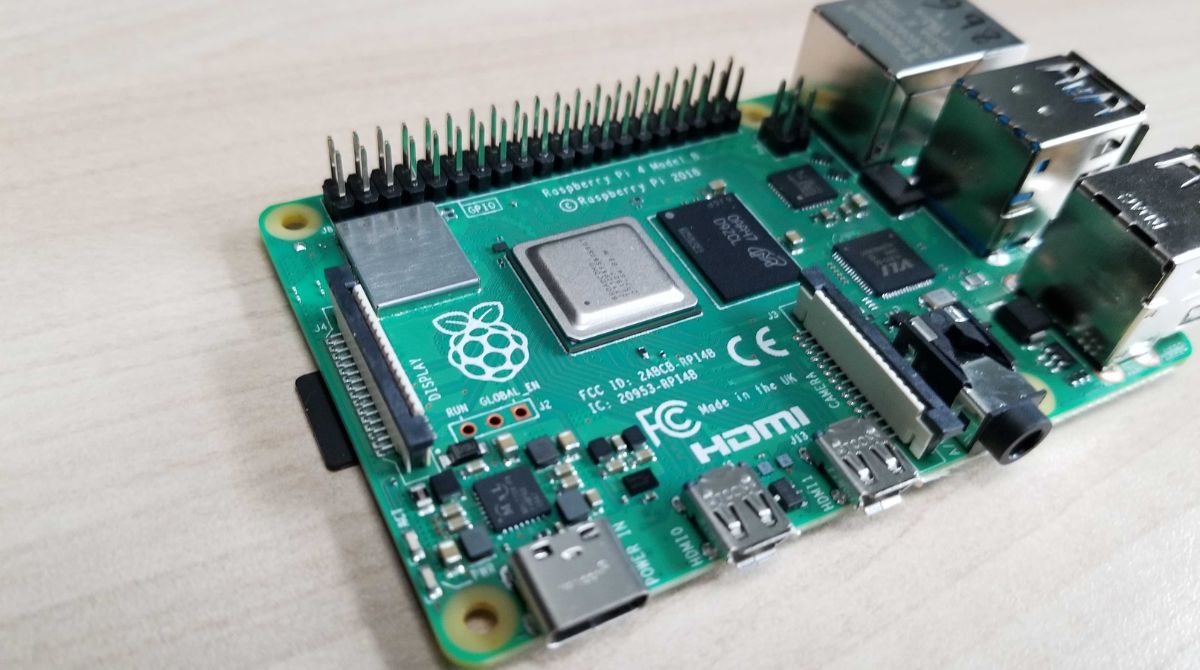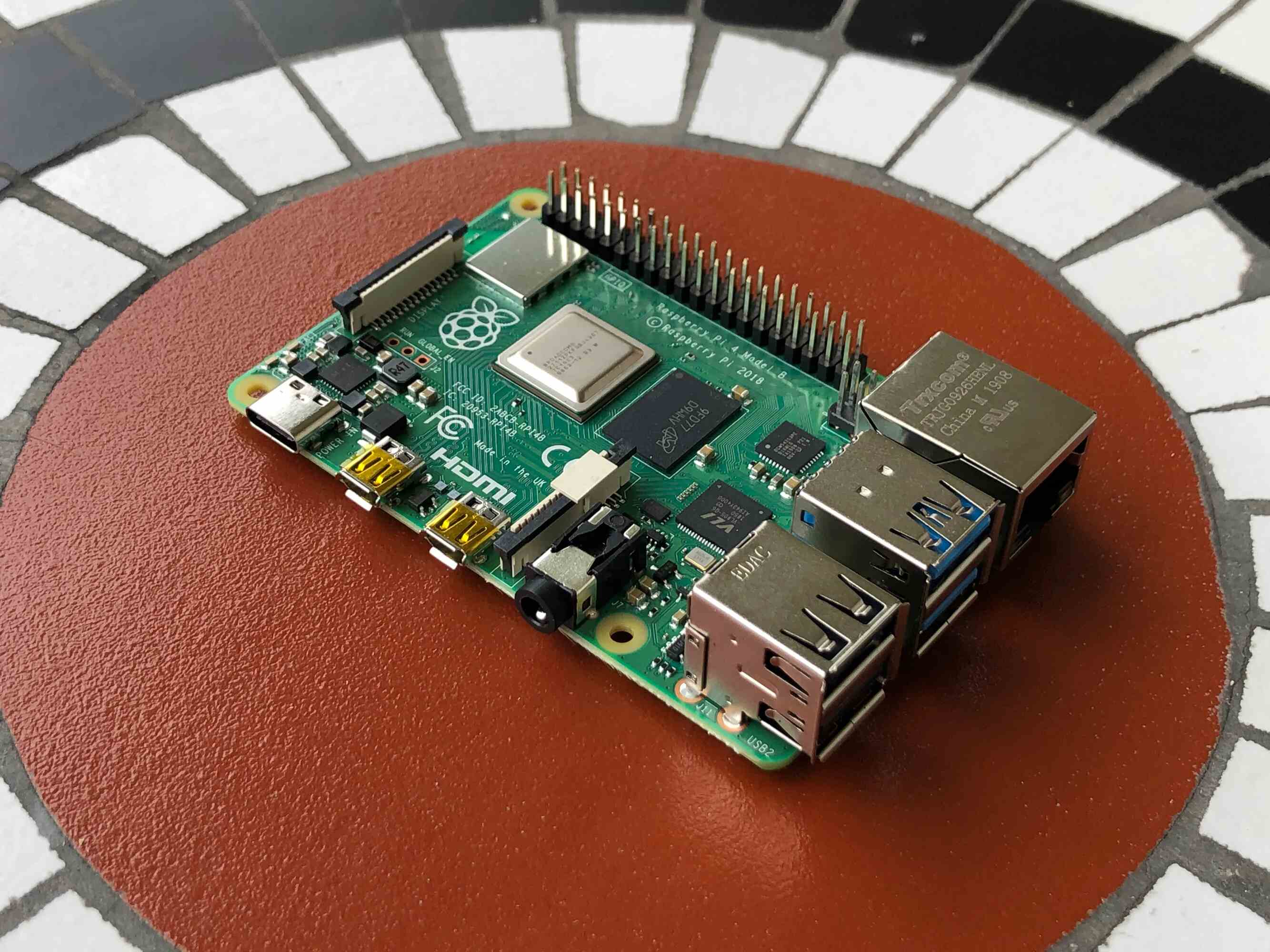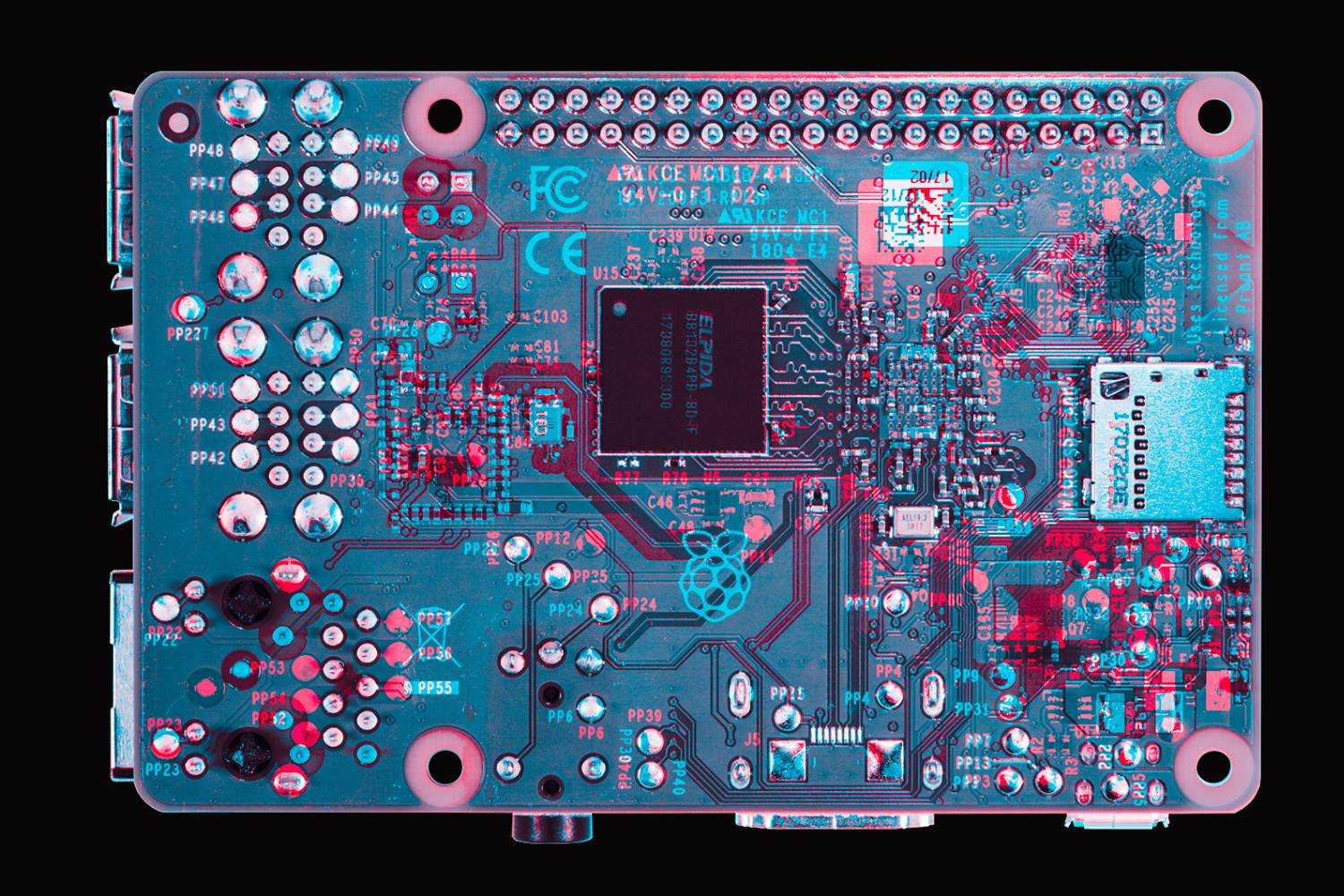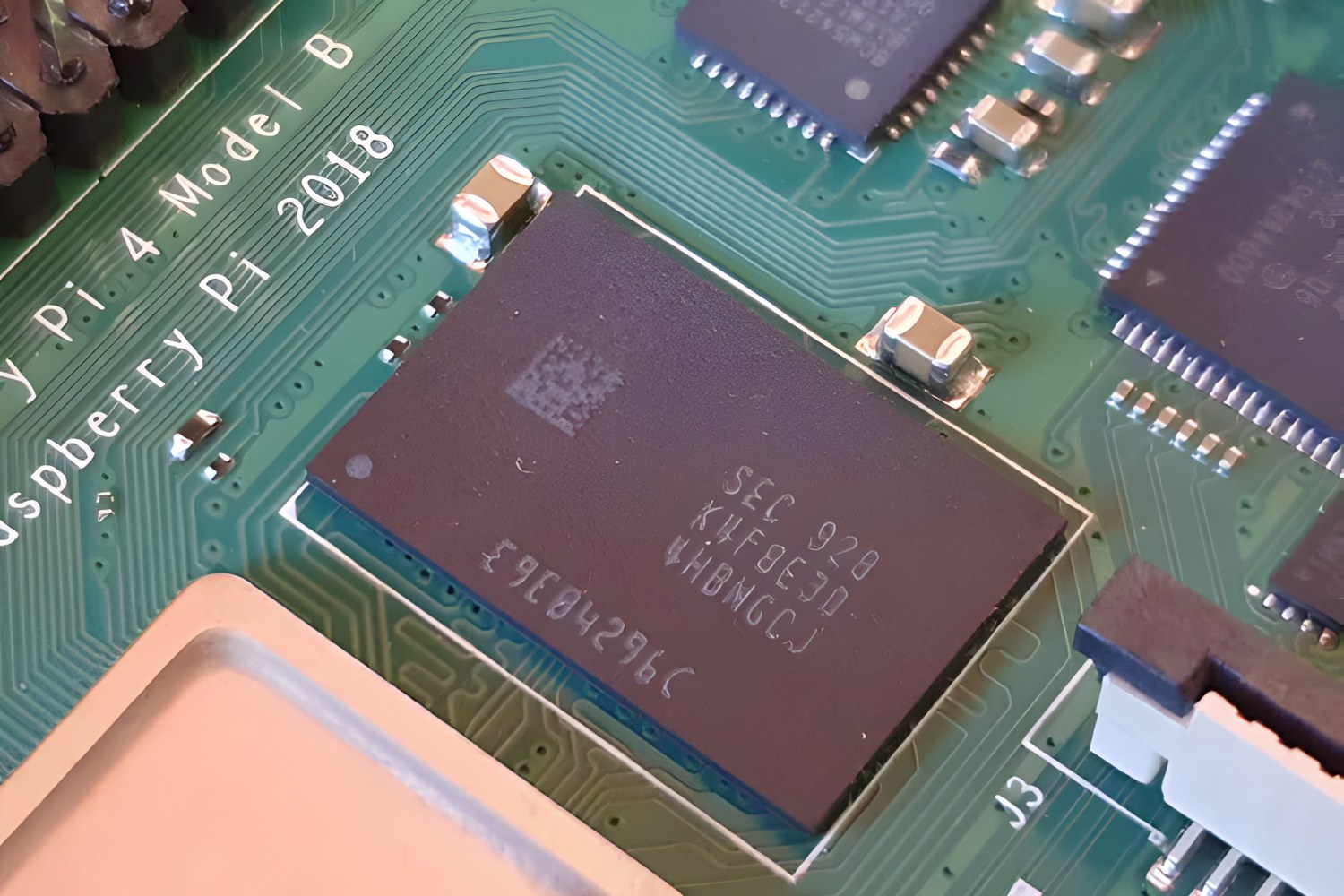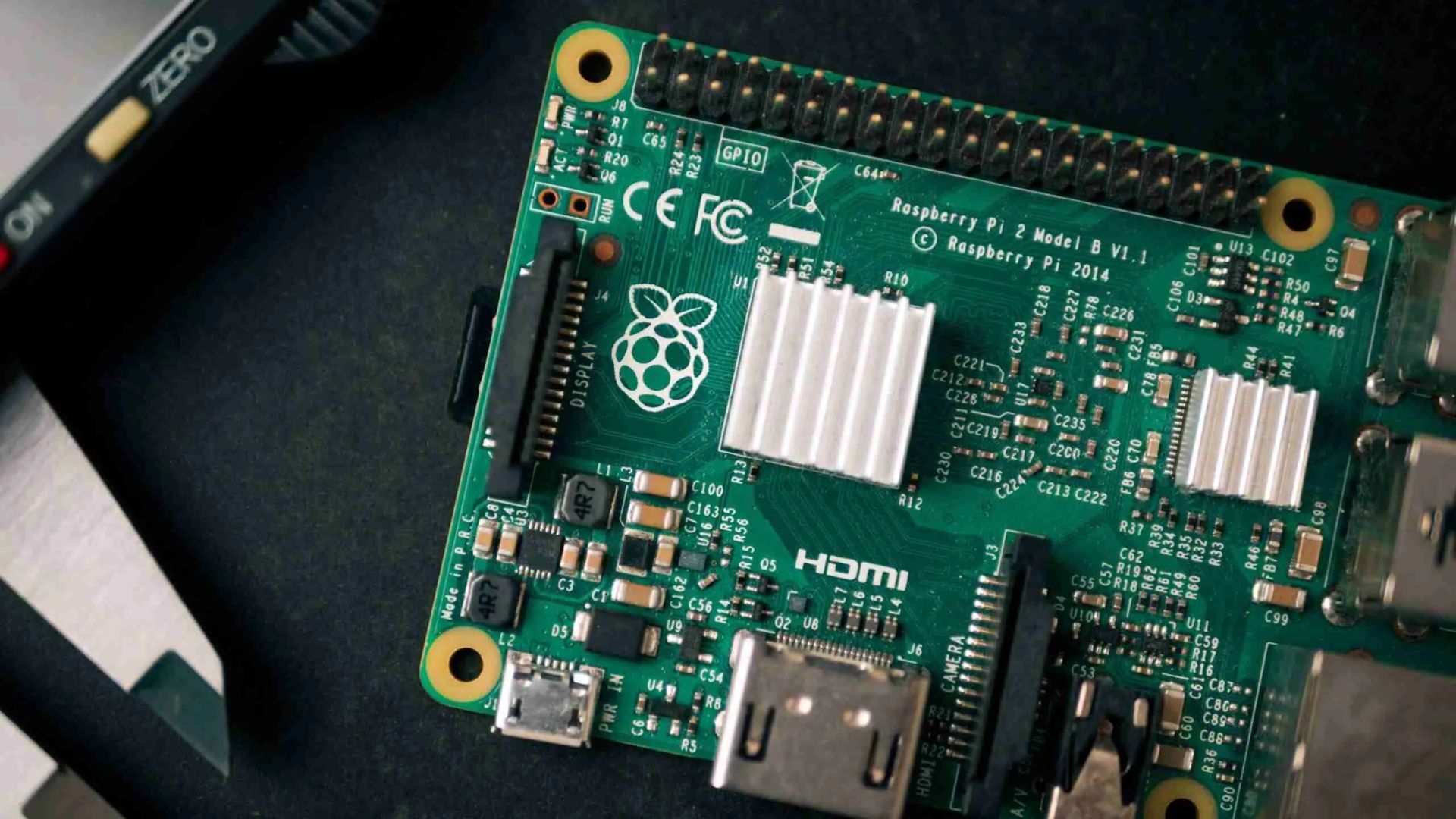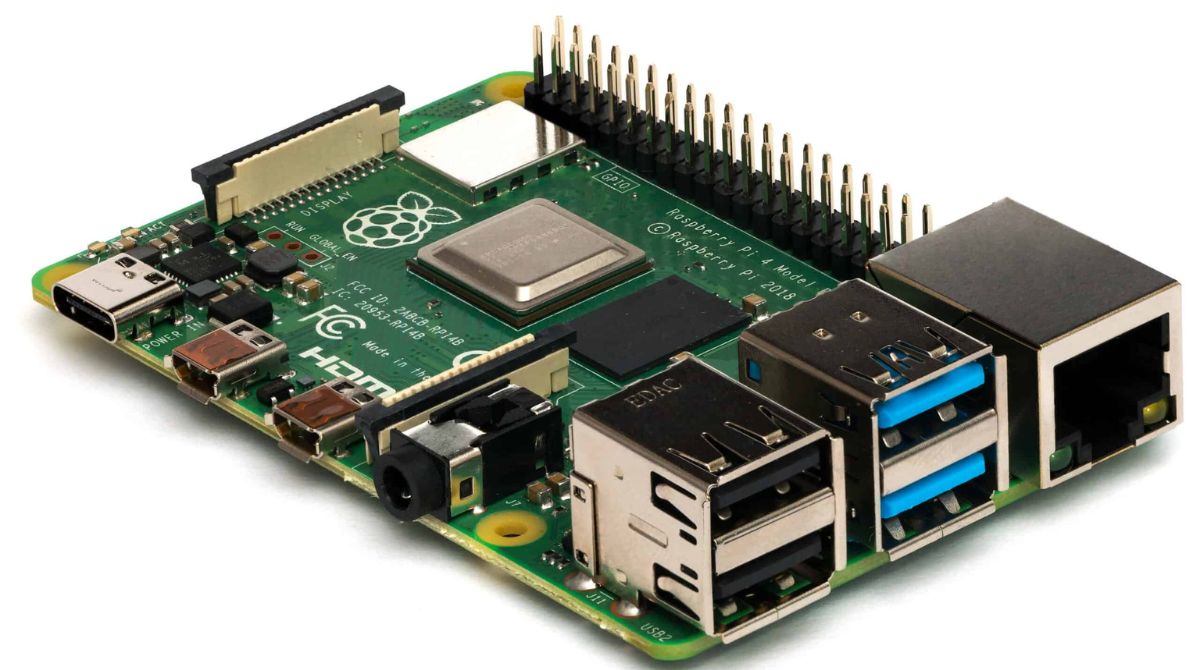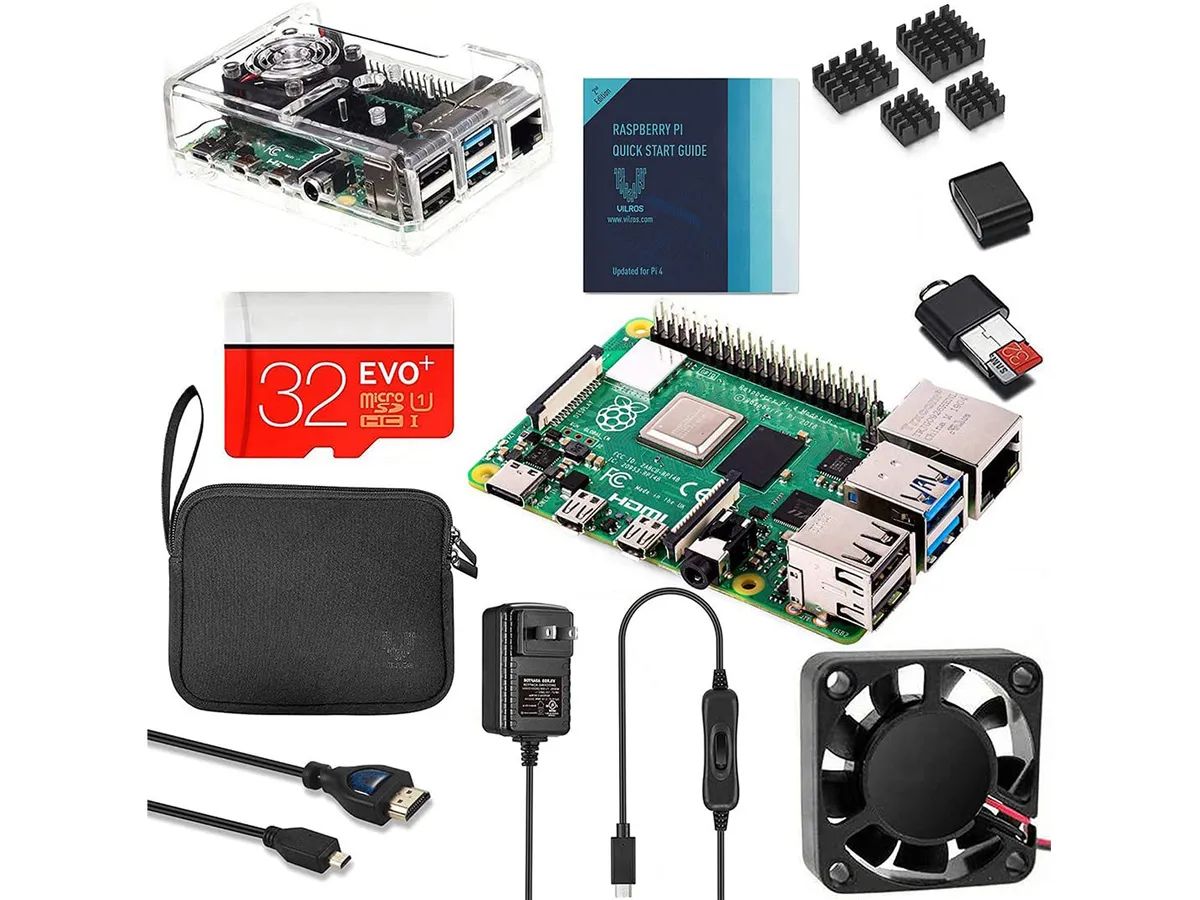Introduction
Raspberry Pi 4 has taken the world by storm since its release, offering an affordable and versatile platform for various projects and applications. Whether you are a hobbyist, a student, or a professional, Raspberry Pi 4 can be your go-to board for everything from home automation to media streaming. However, when it comes to optimizing the performance of your Raspberry Pi 4, one crucial factor to consider is the amount of RAM.
RAM, or Random Access Memory, plays a vital role in the overall functioning of any computer system, including Raspberry Pi 4. It is the temporary storage that allows the processor to quickly access and manipulate data. Having sufficient RAM ensures smooth multitasking, faster program execution, and better overall system performance.
Given the importance of RAM, it is essential to understand how much RAM Raspberry Pi 4 has and how to choose the right amount for your specific needs. In this article, we will delve into the details of Rasbperry Pi 4’s RAM specifications, factors to consider when choosing RAM, recommended RAM sizes for different use cases, and how to upgrade the RAM on your Raspberry Pi 4.
So whether you’re planning to build a media center, a gaming console, or a home server, read on to discover the optimal RAM configuration for your Raspberry Pi 4 system.
What is Raspberry Pi 4?
Raspberry Pi 4 is the latest iteration of the popular single-board computer developed by the Raspberry Pi Foundation. It is a compact and affordable computer that offers powerful capabilities for various projects and applications.
The Raspberry Pi 4 features significant improvements over its predecessors, making it a versatile platform for both beginners and experienced users. It is powered by a quad-core ARM Cortex-A72 processor, clocked at 1.5GHz, providing a significant performance boost compared to previous models.
One of the standout features of Raspberry Pi 4 is its ability to support dual 4K displays, allowing you to create multimedia setups, digital signage, or even multi-monitor workstations. With support for OpenGL ES 3.0 graphics acceleration, you can also enjoy smooth video playback and gaming experiences on Raspberry Pi 4.
Connectivity options on Raspberry Pi 4 have also received an upgrade. It includes two USB 3.0 ports for faster data transfer, two USB 2.0 ports for peripherals, Gigabit Ethernet for high-speed networking, and wireless connectivity through either the onboard Wi-Fi or Bluetooth 5.0.
In terms of storage, Raspberry Pi 4 offers a microSD card slot for the operating system and user data. Additionally, it has two Micro-HDMI ports, a 3.5mm audio jack, and a CSI camera port for connecting cameras and capturing images or videos.
With its compact size, low power consumption, and GPIO (General Purpose Input/Output) pins, Raspberry Pi 4 is ideal for a wide range of projects. It can be used for home automation systems, media centers, game consoles, robotics, IoT (Internet of Things) applications, and much more.
Furthermore, Raspberry Pi 4 supports various operating systems, including the official Raspberry Pi OS (formerly Raspbian), Ubuntu, and third-party distributions, providing flexibility and compatibility to suit different project requirements.
Overall, Raspberry Pi 4 offers a powerful and affordable computing platform that opens up countless possibilities for makers, enthusiasts, and professionals. Its performance, connectivity, and versatility make it an excellent choice for a wide range of projects and applications.
Why RAM is important for Raspberry Pi 4?
RAM, or Random Access Memory, plays a crucial role in the overall performance and functionality of any computer system, including Raspberry Pi 4. It acts as temporary storage where data and instructions are processed by the CPU, allowing for quick and efficient access to information.
Having sufficient RAM is essential for several reasons when it comes to Raspberry Pi 4:
- Multi-tasking: Raspberry Pi 4 is capable of running multiple applications simultaneously, thanks to its powerful processor. However, without enough RAM, the system may struggle to handle the simultaneous execution of various programs. Insufficient RAM can lead to sluggish performance, freezing, or even crashes when the system becomes overloaded. Having ample RAM ensures smooth multitasking and allows you to run several applications without compromising performance.
- Program execution: RAM is used to store the programs and data required for their execution. When you launch an application or run a script on Raspberry Pi 4, it is loaded into the RAM for quick access by the CPU. Insufficient RAM can result in slower program execution, as the system may need to resort to using slower storage devices like SD cards, causing delays and hampering overall performance. Sufficient RAM ensures faster program execution, reducing latency and improving user experience.
- Operating system requirements: The operating system running on Raspberry Pi 4 also needs a certain amount of RAM to function properly. As operating systems become more feature-rich and resource-intensive, they require more RAM to operate smoothly. Insufficient RAM can put a strain on the operating system, leading to slower response times, increased boot times, and a less optimal user experience. Having enough RAM allows the operating system to perform efficiently and ensures a seamless computing experience.
- Data processing: Raspberry Pi 4 can be used for various data-intensive tasks, such as data analysis, image processing, or running machine learning models. These tasks require RAM to store and manipulate large amounts of data. Insufficient RAM can limit the system’s ability to process and analyze data efficiently, resulting in slower performance and reduced productivity. Adequate RAM capacity allows for smoother data processing, faster computations, and more efficient performance in data-oriented projects.
In summary, RAM is a critical component for Raspberry Pi 4 as it directly impacts its multitasking capabilities, program execution speed, operating system performance, and data processing capabilities. To ensure optimal performance and responsiveness from your Raspberry Pi 4, it is essential to have sufficient RAM to meet the demands of your applications and the operating system.
How much RAM does Raspberry Pi 4 have?
Raspberry Pi 4 is available in three different models, each offering different amounts of RAM. The models and their corresponding RAM configurations are as follows:
- 1GB RAM: The base model of Raspberry Pi 4 comes with 1 gigabyte (GB) of RAM. Although this is the lowest RAM configuration available, it is still sufficient for basic computing tasks, such as web browsing, document editing, and media playback. It is suitable for users who have modest requirements and want to keep the cost of their Raspberry Pi 4 system low.
- 2GB RAM: The intermediate model of Raspberry Pi 4 features 2 gigabytes (GB) of RAM. This configuration provides a significant boost in multitasking capabilities and overall system performance compared to the 1GB model. It is suitable for users who require a bit more power for running multiple applications simultaneously or engaging in light data processing tasks.
- 4GB RAM: The top-tier model of Raspberry Pi 4 offers a generous 4 gigabytes (GB) of RAM. This configuration is recommended for users who require even more memory for resource-intensive tasks, such as running virtual machines, handling large datasets, or running complex software applications. The 4GB RAM variant provides ample capacity for smoother multitasking and improved performance in demanding computing scenarios.
It’s worth noting that regardless of the RAM configuration, all models of Raspberry Pi 4 have the same powerful processor and offer the same set of features, including support for dual 4K displays and various connectivity options. The difference lies solely in the amount of RAM, which determines the system’s ability to handle multiple tasks efficiently and process large amounts of data.
When deciding which RAM configuration to choose for your Raspberry Pi 4 system, it is essential to consider your specific needs and use cases. If you plan to use Raspberry Pi 4 for basic tasks like web browsing or media streaming, the 1GB or 2GB model may be sufficient. However, if you anticipate more demanding applications or data processing tasks, the 4GB model would provide a more optimal performance.
Keep in mind that while more RAM can enhance multitasking and overall system performance, it may not necessarily lead to noticeable improvements in every scenario. It is always recommended to assess your requirements and choose a RAM configuration that aligns with your specific needs and budget.
Factors to consider when choosing RAM for Raspberry Pi 4
When selecting the appropriate RAM for your Raspberry Pi 4, there are several factors to consider to ensure optimal performance and compatibility. Here are the key factors to keep in mind:
- RAM Capacity: The first thing to consider is the amount of RAM needed for your specific use cases. Determine the nature of the applications you’ll be running and the complexity of the tasks you’ll be performing. If you plan on running multiple applications simultaneously or engaging in data-intensive tasks, opting for a higher RAM capacity, such as 4GB, would be beneficial. For more basic tasks, a lower capacity like 1GB or 2GB might be sufficient.
- Operating System Requirements: Different operating systems have varying RAM requirements. Ensure that the RAM capacity you choose meets the minimum requirements of the operating system you plan to use. Keep in mind that some operating systems, like Ubuntu, may require more RAM than others. If you have a specific operating system in mind, check its documentation for recommended RAM specifications.
- Application and Workload: Consider the specific applications and workload you’ll be utilizing on your Raspberry Pi 4. If you’re planning to run resource-intensive applications like 3D modeling software or machine learning frameworks, more RAM will be advantageous. It’s also essential to consider any future expansion plans or anticipated changes in your workload to ensure your chosen RAM capacity remains sufficient in the long run.
- Budget: Cost is an important consideration when choosing RAM. Higher RAM capacities generally come at a higher price point. Assess your budget and prioritize the RAM capacity accordingly. Be mindful that while more RAM may offer better performance, it may not always be necessary for your specific use cases. Evaluate your requirements and strike a balance between performance and budget.
- Compatibility: Ensure that the RAM you choose is compatible with Raspberry Pi 4. Verify compatibility with the specific model and version you own. It is recommended to refer to the official Raspberry Pi documentation or trusted sources to find compatible RAM modules. Consider factors such as voltage requirements, form factor (e.g., SODIMM or MicroDIMM), and clock speed compatibility.
By considering these factors, you can make an informed decision about the RAM for your Raspberry Pi 4 system. Choosing the right RAM capacity ensures optimal performance, seamless multitasking, and a smoother overall computing experience on your Raspberry Pi 4.
Recommended RAM sizes for different use cases
The amount of RAM you choose for your Raspberry Pi 4 should be based on your specific use cases and requirements. Here are some recommended RAM sizes for different use cases:
- Basic Computing Tasks: If you intend to use your Raspberry Pi 4 for basic tasks like web browsing, document editing, or media playback, a RAM capacity of 1GB or 2GB will typically suffice. These capacities provide enough memory for smooth multitasking and handling everyday applications without any noticeable performance issues.
- Home Automation and IoT: For home automation or IoT projects, where you may be running various sensors, controlling devices, and analyzing data, it is recommended to opt for a RAM capacity of 2GB or 4GB. This will ensure that your Raspberry Pi 4 has enough memory to handle the data processing requirements and maintain smooth operation of your connected devices.
- Media Centers and Video Streaming: If you plan to use your Raspberry Pi 4 as a media center or for video streaming purposes, it is recommended to go for a 2GB or 4GB RAM configuration. This will provide ample memory for seamless playback of high-definition videos, smoother navigation through media libraries, and the ability to run media center software such as Kodi or Plex without any performance bottlenecks.
- Data Processing and Analytics: If you are involved in data processing tasks, such as data analysis, machine learning, or running complex software applications, it is advisable to choose a RAM capacity of 4GB. This will allow your Raspberry Pi 4 to handle large datasets and perform computations efficiently, resulting in improved performance and faster processing times.
- Server Applications and Virtualization: If you plan to use your Raspberry Pi 4 as a server for hosting websites, running server applications, or virtualizing operating systems, it is recommended to opt for a 4GB RAM configuration. This will provide enough memory to handle the demands of multiple concurrent connections, virtual machine instances, and resource-intensive server applications.
Please note that these recommended RAM sizes are general guidelines, and your specific use cases may vary. It’s important to assess your requirements, consider the complexity and intensity of your tasks, and choose a RAM capacity that provides a balance between performance and cost.
Remember that you can always start with a lower RAM capacity and later upgrade if you find that your current configuration is not meeting your needs. Upgrading the RAM on Raspberry Pi 4 is a straightforward process and can be easily done by purchasing compatible RAM modules and following the installation instructions provided by the Raspberry Pi Foundation.
How to upgrade RAM on Raspberry Pi 4
Upgrading the RAM on your Raspberry Pi 4 can be a great way to boost its performance and tackle more demanding tasks. Although the RAM on Raspberry Pi 4 is soldered onto the board and cannot be directly replaced, it is still possible to increase the available memory by utilizing swap memory or using a USB storage device as additional virtual memory. Here’s how:
- Swap Memory: Raspberry Pi OS allows you to set up a swap file or partition, which can act as virtual memory when the physical RAM is running low. To create a swap file, you can use the ‘dphys-swapfile’ package. Install the package using the following command:
sudo apt-get install dphys-swapfileOnce installed, the swap file can be enabled by modifying the ‘/etc/dphys-swapfile’ configuration file. You can adjust the size of the swap file to suit your needs. After making the necessary changes, restart the ‘dphys-swapfile’ service using:sudo systemctl restart dphys-swapfile - USB Storage Device: Another option to increase the available memory on Raspberry Pi 4 is to utilize a USB storage device as virtual memory. This can be achieved by creating a ‘swap’ partition on the USB storage device and configuring Raspberry Pi OS to use it. First, connect the USB storage device to your Raspberry Pi 4. Use the ‘lsblk’ command to identify the device name and create a new partition on it. Format the partition with Linux swap using the ‘mkswap’ command. Finally, update the ‘/etc/fstab’ file to mount the swap partition at boot.
- Performance Considerations: While utilizing swap memory or USB storage as virtual memory can provide additional memory capacity, it’s important to note that it may not offer the same level of performance as physical RAM. Accessing swap memory from external storage devices will introduce some latency compared to direct RAM access. Therefore, it is recommended to have a sufficient amount of physical RAM for optimal performance, and these methods should be seen as temporary solutions or alternatives when direct RAM upgrades are not possible.
Regardless of the method you choose, it is important to monitor system performance and ensure that the Raspberry Pi 4 is not constantly relying heavily on swap memory. Excessive swapping can lead to decreased performance due to the slowdown associated with accessing external storage, causing delays in data retrieval and processing.
Remember that upgrading the RAM on Raspberry Pi 4 by adding swap memory or utilizing USB virtual memory can provide a temporary solution and enhance the overall performance of your system when more memory is required. However, if your projects or applications demand a significant increase in RAM capacity, it is advisable to consider purchasing a higher RAM variant of Raspberry Pi 4 to fully harness its potential.
Conclusion
Raspberry Pi 4 is a versatile and powerful single-board computer that can fulfill a wide range of computing needs. The amount of RAM you choose for your Raspberry Pi 4 plays a crucial role in its performance and functionality.
When choosing the right amount of RAM for your Raspberry Pi 4, it’s important to consider factors such as your specific use cases, operating system requirements, application workload, budget, and compatibility. By selecting the appropriate RAM capacity, you can ensure smooth multitasking, faster program execution, and better overall system performance.
Raspberry Pi 4 is available in three RAM configurations: 1GB, 2GB, and 4GB. For basic computing tasks, the 1GB or 2GB models are sufficient, while more demanding applications and data processing tasks may require the 4GB model.
If you find that your Raspberry Pi 4’s RAM is not meeting your needs, there are alternative methods to increase virtual memory by utilizing swap memory or USB storage. However, these methods may not offer the same performance as physical RAM and should be seen as temporary solutions or alternatives when direct RAM upgrades are not possible.
By understanding the importance of RAM and considering the different factors involved, you can make an informed decision when choosing the RAM for your Raspberry Pi 4, ensuring optimal performance and a smooth computing experience for your specific use cases.
So, whether you’re building a home automation system, media center, server, or engaging in data processing tasks, choosing the right amount of RAM will unlock the full potential of your Raspberry Pi 4 and open up a world of possibilities for your projects and applications.







